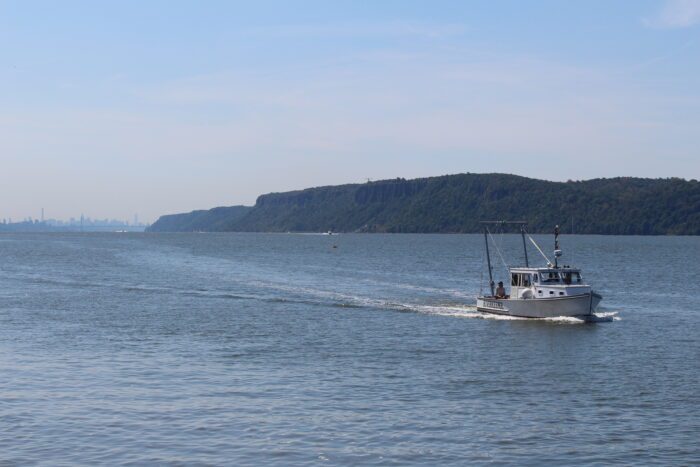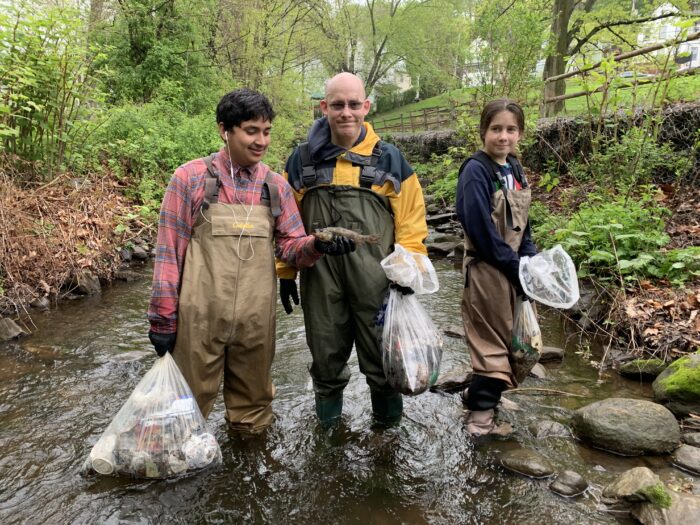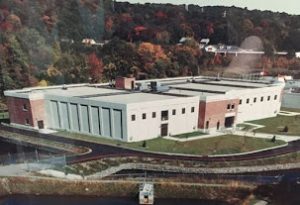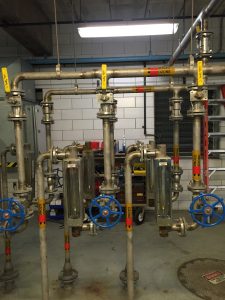
PHOTO COURTESY OF RIVERKEEPER
Are visions of fishing, swimming, boating, kayaking and gardening swirling in your head? Obviously, the common denominator in these fun pursuits is w-a-t-e-r.
Like the Hudson River, the largest body of water among us, water is a year-round commodity that we easily take for granted, but shouldn’t. So much revolves around this amazing body of water, which the Mahican Indians named Muh-he-kun-he-tuk, “the river that flows both ways.”

PHOTO BY GARETH HOUGHAM
What Makes the Hudson River So Special?
Named after Henry Hudson, the English navigator who visited the river in his schooner Half Moon circa 1609, the Hudson River makes its 315-mile journey from Lake Tear of the Clouds in the Adirondack Mountains to New York Harbor before blending in with the Atlantic Ocean.
Extending for around 153 miles, the lower part of the Hudson is a tidal estuary, meaning that it “ebbs and flows with the ocean tide,” per Riverkeeper.org. It contains a combination of salty ocean water and freshwater from tributaries, aka small streams and creeks, all stretching from New York Harbor to Troy, NY.
Most people don’t realize that the Hudson River “supports a biologically rich environment, making it an important ecosystem for various species of aquatic life” for whom it “provides critical habitats and essential spawning and breeding grounds,” say the Riverkeeper’s proponents.
Riverkeeper.org, which started over 50 years ago as the Hudson River Fishermen’s Association, plays a major role in protecting the Hudson River’s ecology and the drinking water supply. Dan Shapley, its Water Quality Program Director since 2014, shared some interesting facts about Hudson River water quality that apply specifically to Ossining and Briarcliff Manor, as well as to other river communities.
For example, “The Hudson is only as clean as its tributaries…. In Ossining, it’s our [Riverkeeper’s] job to take care of the small streams like the Sing Sing Kill and Sparta Brook….” That makes sense since whatever goes into the streams ends up in the Hudson.
Village of Ossining Mayor Victoria Gearity highlighted the aesthetic aspect of what’s known as “the Sing Sing Kill Greenway,” which has become a wonderful place to walk. In her February 10th “message” to residents, she noted: “The Sing Sing Kill Greenway began as an infrastructure project whose purpose was to protect the Hudson River from contamination by encasing in concrete the sanitary sewer line that runs through this tributary. Modest upgrades transformed the project to become a greenway, with a vision to eventually connect pedestrians all the way to Water Street from downtown.”
And Dan Shapley added: “The Sing Sing Kill, particularly, is such a community asset, with the greenway trail that runs along it. It’s something we should cherish and protect.”
Shapley’s passion for the Hudson River comes out loud and clear: “The Hudson River is an amazing engine of life for the Atlantic Ocean, a source of drinking water for more than 100,000 people, and a source of joy for those of us who paddle or swim in it or visit the water’s edge.”
This time of year, it’s important to note that as one moves “away from shorelines or tributaries,” Shapley said, “water quality is often safe for swimming… However, nearer to the shoreline, water quality is much more variable, and is often risky for swimming after rain.” So, for communities along the shoreline, such as Ossining and Briarcliff, swimming might be a problem.
However, Shapley continued: “…Ossining beach at Louis Engel Park is right on the cusp of meeting the EPA’s criteria for a safe swimming beach.” Since “water quality is so close to meeting EPA’s threshold for safe swimming, we and the elected leaders of Ossining (Town and Village) have been looking for opportunities to expand public recreation at the beach.” That’s good news particularly for post-COVID times.
Meanwhile, Ossining-area residents will have to be content with a number of other water-related activities.
William Garrison, the Village of Ossining’s Superintendent of Recreation and Parks, cited the popular kayaking tours and lessons, a sailing program, and the Spray Park, which is “a designated area with special spouts that squirt water for young children and their parents to cool off during the hot summer days.”
Keeping the River Clean
The recreational benefits of the Hudson River are greatly enhanced by Sweep, Riverkeeper’s annual one-day service event. Co-directed by Jen Benson and Nick Mitch, Sweep coordinates 2,000 volunteers who “sweep up” trash and debris from 120 locations along the Hudson River Watershed and its tributaries. So, how much trash has Sweep scooped up over the years?
“Over the last eight years,” Benson said, “Sweep projects have removed 259 tons of debris [riverwide], including 28.6 tons of recycling.” And in Ossining alone, Shapley noted, 3.5 tons of trash (7,009 lbs) have been removed. And 60+ storm drains have been “stenciled,” meaning that the drains were marked with reminders “that trash on the street reaches our streams via storm drains and pipes.”
What an astonishing amount of junk. I cringed just hearing those figures.
Recreational and water-quality issues aside, Riverkeeper and other groups, along with elected officials from the Village and the Town of Ossining and Briarcliff Manor, also have their eyes on the future of the Hudson River–and with some level of concern.
In discussing the importance of the Hudson River, Ossining Town Supervisor, Dana Levenberg, stressed that the Hudson is “critical for economic development, recreation, and commerce. It is a defining characteristic of our Town and Village.”
But “… what keeps me ‘up at night’ is the idea that the Metro North railroad line along the Hudson River will not exist in 80 years if nothing is done. The culprit? Sea-level rise causing coastline changes.”
“Sea-level rise causing coastline changes”? That sounds almost ominous.
Levenberg went on to explain: “The Metro North line is the life force of our Hudson Valley. It’s either going to need to be raised seriously by an awful lot or moved or replaced with alternative transportation. Either way, this is going to be a multi-million dollar project in the coming years…. As sea levels rise and climate change impacts our shorelines, we need to plan for short-, medium- and long-term changes effectively.”
For both Town Supervisor Levenberg and Victoria Gearity, Mayor of the Village of Ossining, “the critical question is ‘How can we embrace and take advantage of rising-water levels so that it ends up improving our communities and not destroying them?'”
The same sentiment goes for the Village of Briarcliff, which has a more modest stretch of coastline with which to deal. Village of Briarcliff Manager, Philip E. Zegarelli, explained that there’s “a limited area of water access,” which is known as Scarborough Park.
Scarborough Park
Commuters on the Hudson Line are aware of Scarborough as a train stop along the Hudson. But does everyone know that five out of the six acres constitute the 97-year-old Scarborough Park, an acre of useable land with a dock and a lot of potential?
This park land is currently “being addressed under a capital project–the Scarborough Park Restoration Project.” Zegarelli pointed out its purpose: “restore and stabilize the shoreline,” which has been subject to “constant storm and tidal effects of the Hudson River.”
Like Ossining, it too will have to deal with the impact of sea-level changes in the future. Meanwhile, Briarcliff Manor residents and visitors are encouraged “to use the area for picnicking, for enjoying the gorgeous river sunsets, and for fishing.”
And there are always the small lakes that Briarcliff Manor Mayor Steven Vescio says have “great trail ways,” which have been enhanced, “making them more enjoyable for our residents to hike or bike along them.”
So what do you say? Perhaps a trip down by the riverside to the Ossining or the Briarcliff Manor coastline is indeed an idea whose time has come.
For Riverkeeper programming during the pandemic, be sure to visit riverkeeper.org for rescheduled and/or online events.

 A Tour of Millwood’s Water Treatment Plant Reveals the Vast Improvements Made
A Tour of Millwood’s Water Treatment Plant Reveals the Vast Improvements Made 

